CONSIDERATIONS
- What types of content will be stored?
- What rules will determine which content to publish?
- How will access to the content be governed?
- How will multilingual content be handled?
According to Gartner, marketing teams spend approximately 30 percent of their budget on content creation, which is no surprise: now more than ever, content is the cornerstone of your business. Organizations across every industry (including retail, healthcare, financial services, government, manufacturing, education, and more) increasingly rely on content marketing to engage and nurture potential customers, to create new revenue opportunities, and to ensure customer satisfaction.
Given the critical role of content in modern business strategies, the agility of an organization’s content management workflows can have an enormous impact on business results. As such, adopting an enterprise content hub can be an integral part of a successful digital experience strategy.
This paper explores the benefits of adopting an enterprise content hub, provides questions to consider before selecting a content hub, and introduces the three most common types of content hub architecture.
What is an enterprise content hub?
Large organizations often face challenges implementing an effective content strategy because the content teams may be siloed, using disparate CMSes. The technology or design teams may also have different skill sets, making it harder to rally on a single unified platform.
An enterprise content hub is a data store that centralizes all of the content in a single repository and provides the flexibility to create once, publish everywhere. Via APIs, it can also separate, or decouple, the editorial experience from the customer-facing technology where all of the content is displayed. Additionally, content hubs provide adaptability for technology teams to iterate on the end-user experience without impacting the editorial workflow.
Why use an enterprise content hub?
There are many advantages to using a centralized content hub, some of which are:
1. Improving the quality of content
An enterprise content hub can have more than just technical benefits. Content hubs empower content creators to focus on producing unique content and avoiding duplication of effort. It provides teams with the freedom to focus on the areas they know best.
2. Improving the speed and consistency of content production
Content hubs equip your product and marketing teams to get to market faster by streamlining content delivery across every channel. Rules can be configured so that posts that meet specific criteria are published across multiple sites immediately, without the need for human intervention.
3. Create once, publish everywhere
Whenever an organization has disparate content management systems, it becomes challenging to publish articles across all properties. An enterprise content hub can be a centralized store for all content, allowing different teams to republish content as per their policies.
4. Personalization
Content hubs are also valuable in the personalization context, where curated, branded or generated content for a topic is displayed and customized for each audience member. For this paper, we will focus on the digital experience context of content hubs, but more information about personalization can be found here.
5. Rapid prototyping while limiting impact on editorial productivity
Decoupled applications help organizations rapidly prototype and improve the end-user experience without impacting the editorial workflow. An enterprise content hub is inherently decoupled as there is a content provider (the hub) and content consumers (the various digital properties). It’s a step beyond the typical decoupled architecture as the consumer could display a wide variety of content from multiple sources.
6. Dynamic content feeds
A standalone marketing microsite may require a different technology stack and may rely primarily on evergreen content. Traditionally, these sites are unable to accommodate new content as their content creators are involved only for the initial launch.
An enterprise content hub enables these smaller sites to publish new, relevant articles without the need for manual curation.
7. Removing intra-organizational barriers
Providing autonomy to teams without hindering shareability can be onerous. Centralizing the content breaks intra-organizational barriers in content sharing and helps provide a more unified, consistent experience across all digital platforms.
What is a Content API?
A Content API provides API access to all types of content, granting flexibility in how and where that content is consumed. A Content API can also provide the flexibility to add a subscription layer, giving content creators the option to license the content to third parties for an additional revenue stream.

Four things to consider when building an enterprise content hub
When investing in a content hub, it’s important to identify the strategy that best serves the needs of both customers and internal stakeholders. These questions provide an initial framework to help inform the decision.
1. What types of content will be stored?
What types of content (text, video, images, product descriptions, etc.) will the content hub store? Where will the supporting assets related to the content be stored? If a DAM will be used, how will it integrate with the content hub?
2. What rules will determine which content to publish?
There might be scenarios where new content needs to be pushed to all sites and channels immediately. How will this be designated? Will it by content type, a tag, or an additional option? Who will be responsible for executing that delivery?
3. How will access to the content be governed?
Who will have access to the entire hub? What’s the minimum number of people who need access, and from what teams? Could the access be role-based and restricted to only the sites the authors manage?
4. How will multilingual content be handled?
If there are multiple languages or locales supported, how will it be handled? Will there be a separate content hub for each language or should an automatic translation pipeline be built into the workflow for all content that needs to be published everywhere?
Alternatively, does each geo-specific site support both the local language and English? In this case, the content would be pushed only to the locale’s English site. Will this approach change depending on the locale?
Different types of content hubs
While content hubs are customizable to each organization’s unique needs, they can be organized into three main types: decoupled standalone, decoupled network, and coupled (either standalone or network).
This section offers a brief overview of each type. If you’d like to discuss any of these approaches in detail, please get in touch.
Decoupled standalone
A standalone content hub is the simplest setup where a single entity is the enterprise content hub and the content displayed on a property can be personalized or curated based on the tags, taxonomies, or personalization engines.
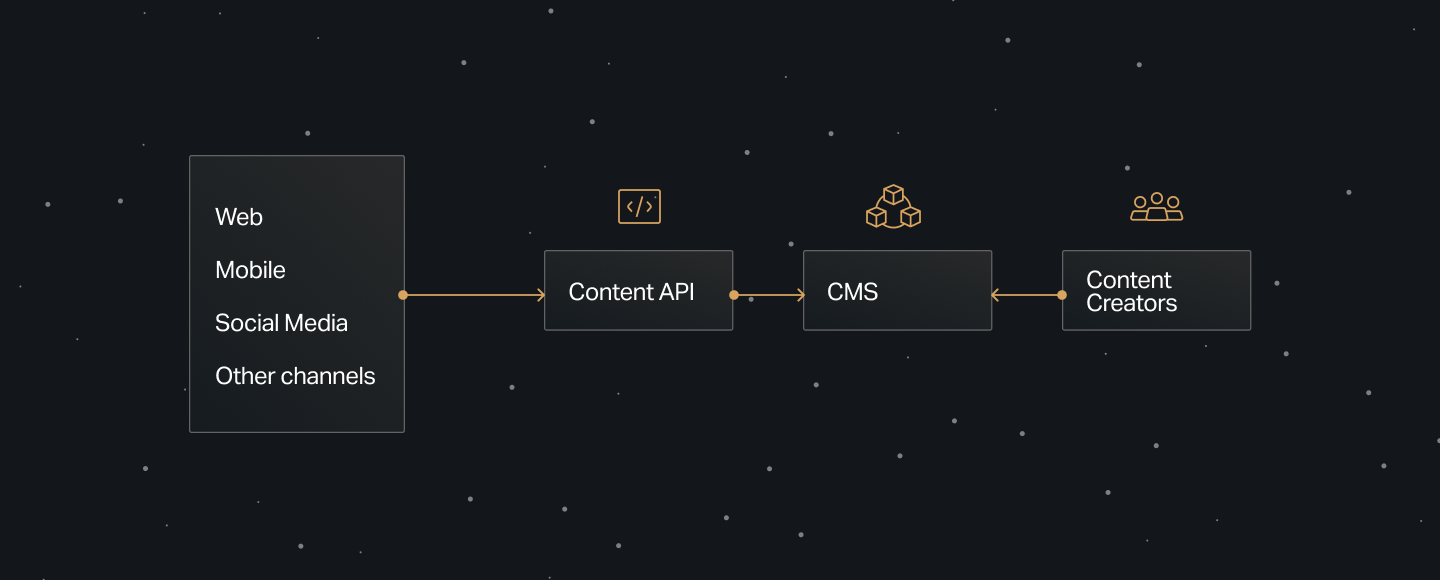
Decoupled network
Network implementations of a content hub have separate entities for digital outlets or business units. The main site can syndicate content to the rest of the properties or the properties can make a request to the main site for content.

Coupled (standalone or network)
Both standalone and network implementations of a content hub can be coupled, where the frontend of the site is also rendered by the CMS. This implementation is used for properties that have their own client-facing implementation but would like to share content with other properties. For example, a main site that syndicates content to geo-specific sub-sites.
A Content API for external services can be exposed even though the primary property has a tightly coupled frontend.
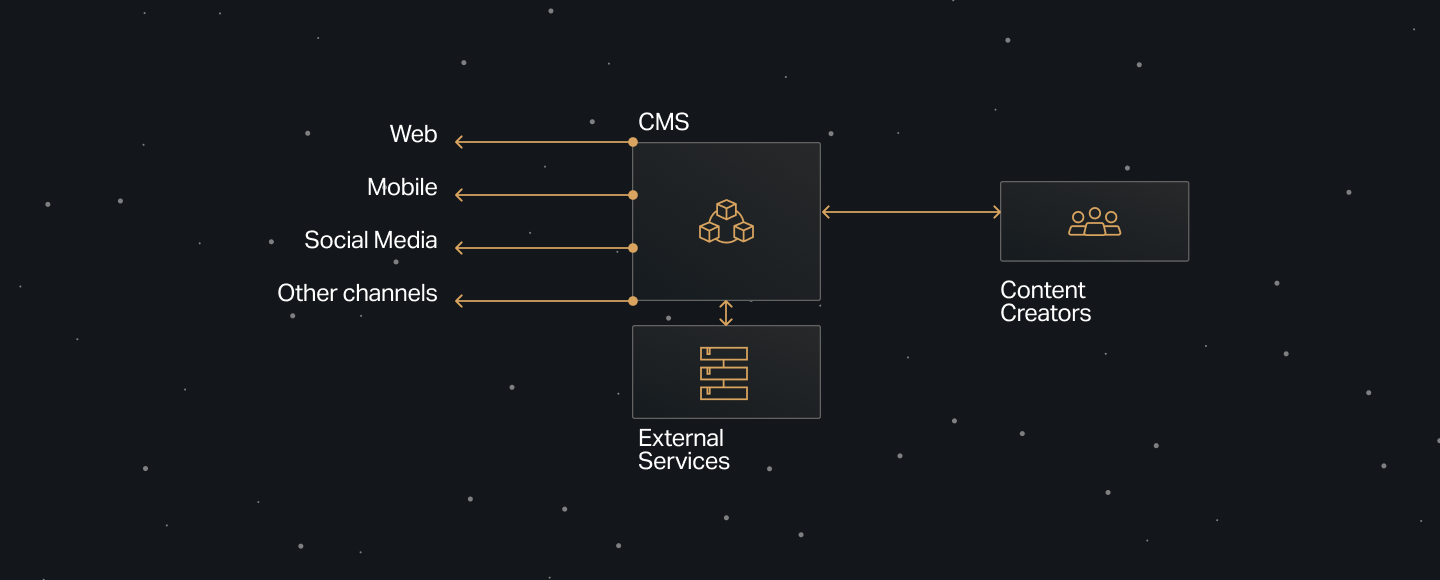
Why use enterprise WordPress for your content hub?
The flexibility of WordPress makes it an ideal candidate for an enterprise content hub. Because WordPress powers over 42% of the web, its interface is familiar to content creators who often need little to no training to operate the platform. Additionally, WordPress software natively supports the REST API. In terms of security, granular access management is covered by role-based access control and WordPress supports multiple Single Sign-On (SSO) solutions.
Thanks to the extensive enterprise WordPress ecosystem, extendability options are covered with seamless third-party integrations. For example, a WordPress Content Hub supporting GraphQL could use either the wp-graphql plugin or proxy requests through an external GraphQL server such as Apollo Server.
Implementing an enterprise content hub using WordPress
WordPress supports all three types of enterprise content hubs and provides flexibility to customize the process as per the editorial requirements. Content can be consumed immediately through a variety of mediums (REST API, GraphQL, RSS feeds, etc.).
For architectures that are using WordPress for both the content hub and the consumer, custom syndication plugins can provide a simple and intuitive interface for the editors to quickly filter, browse, and publish available content.
Standalone
With a standalone WordPress setup, the content hub could also have its own frontend site or be used exclusively as a content repository via the REST API or GraphQL.
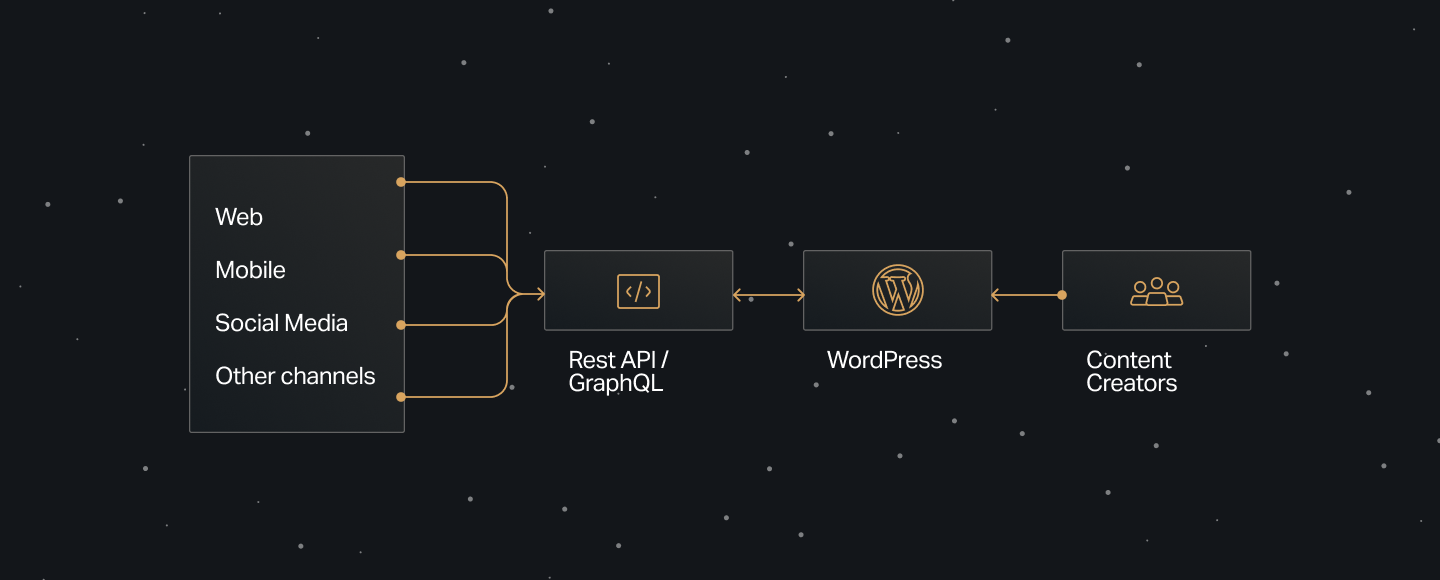
Multisite
As the network implementation option for WordPress, multisites provide the flexibility to create multiple sub-sites within a single network, making it easy to mirror an existing organizational structure.
Multisites provide a single system for all content creators, simplifying user management and access control. Even though there is a concept of a main site and subsite, it doesn’t limit the network to have a single content hub. For example, two subsites could have content from two different news wires and the other subsites could consume the content through a custom plugin.
The interface to consume content can be customized to provide minimal friction for the editors to quickly find and publish the content. The implementation could also define criteria for auto-publishing content. For example, any urgent news article posted by the global site is automatically posted to all of the geo-specific sites.
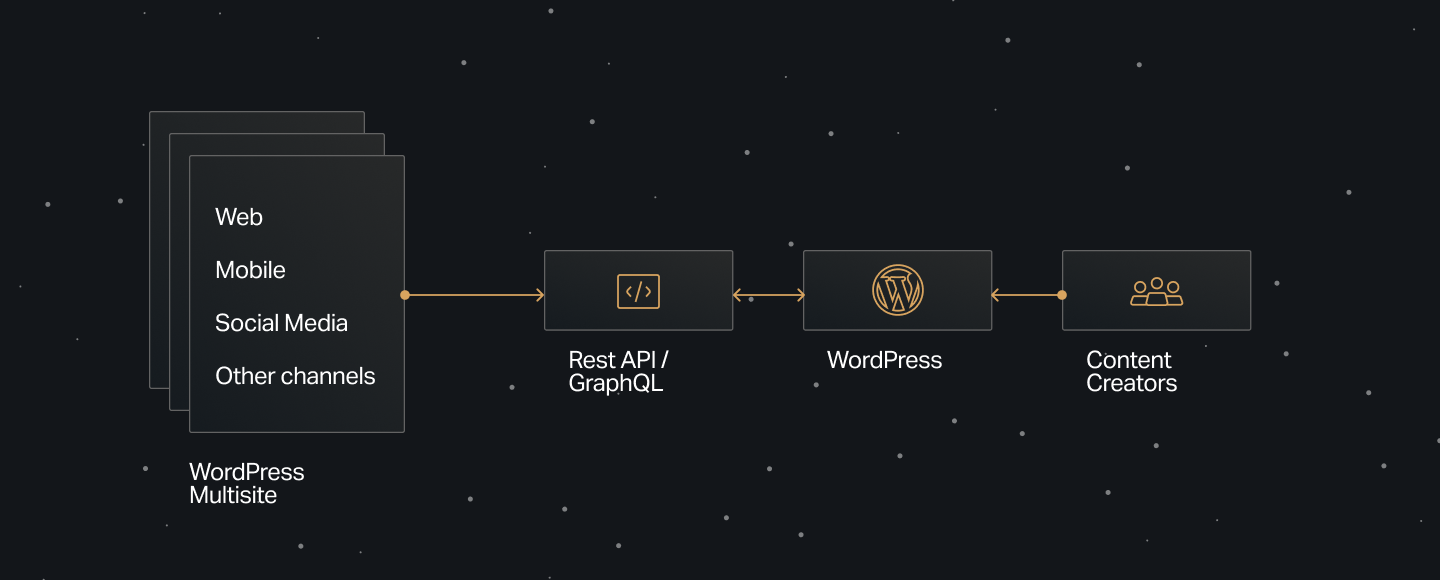
Coupled/decoupled
Both standalone and multisite hubs can be either coupled or decoupled. With the flexibility of WP-API and wp-graphql, a coupled site can also provide a content API for external sites or systems. For more information on WordPress and decoupled/ headless implementations, see what to know before you go decoupled.
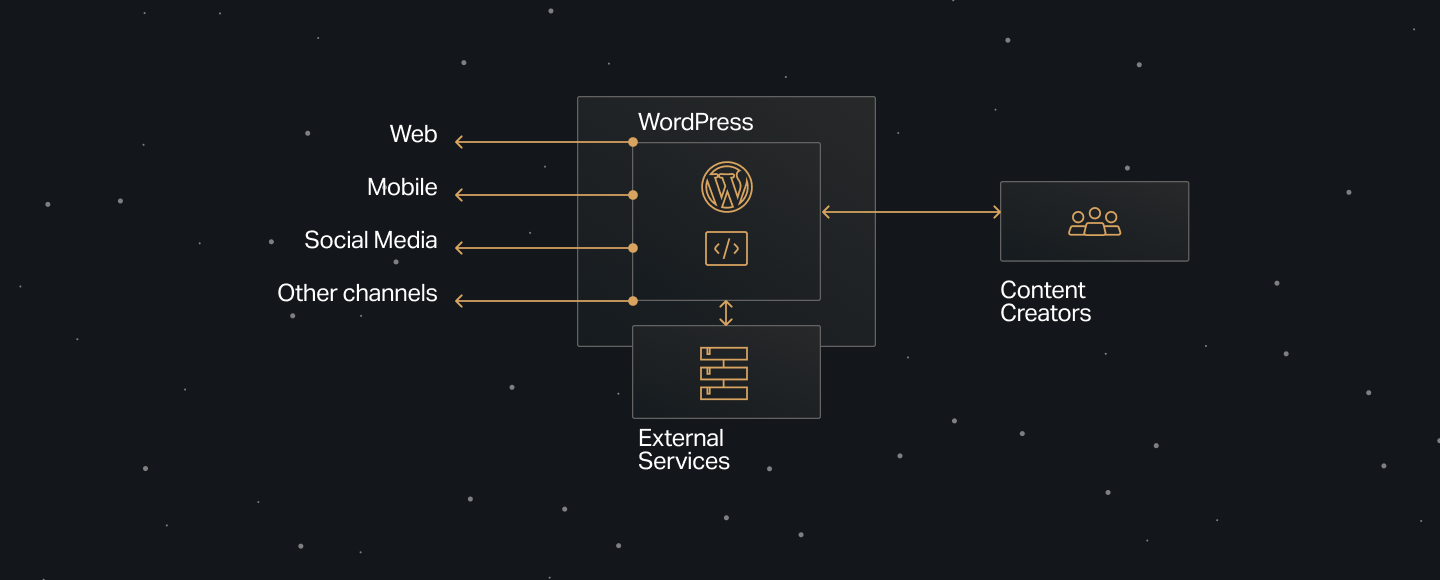
Afterword
An enterprise content hub ultimately breaks down organizational silos and sets up your content creators for success as they will be able to reuse existing content and create new content more efficiently. The wide variety of options gives the flexibility of implementing distribution workflows without the need for manual republication.
At WordPress VIP, we have helped our clients build content hubs for some of the most popular websites in the world. Whether your organization is ready to centralize content or is in the early stages of risk/benefit analysis, WordPress VIP experts are available to help.
Get the white paper
